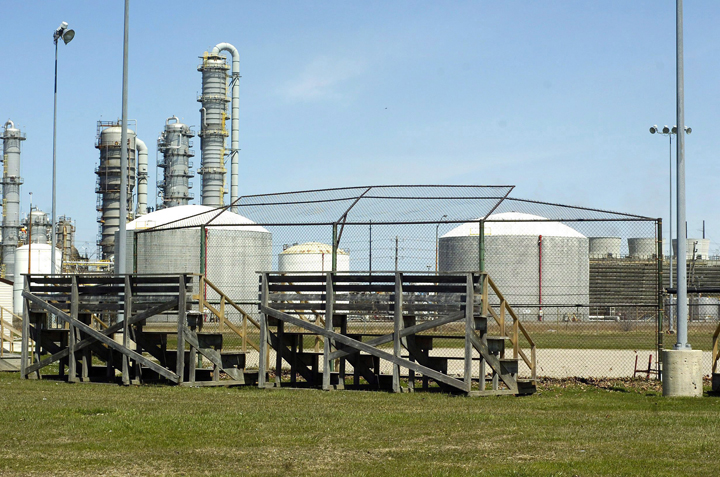Ada Lockridge never imagined that one day she’d be mired in a legal battle. But that’s where she stands today, at the centre of a court case, defending her rights—and that of her fellow 800 residents of Aamjiwnaang First Nations—to live in a clean, safe environment.

Bordering Sarnia, Ontario, the reserve is a neighbour to 40 per cent of Canada’s petrochemical industry, with sixty facilities located within a 25 kilometre radius of Aamjiwnaang lands. Dubbed Chemical Valley due to the high level of emissions in the area, it’s not surprising that in 2011 the World Health Organization found Sarnia residents are breathing some of the most polluted air in all of Canada.
Worried about the health effects of these pollutants, Lockridge started an environmental committee, searching for links between health and pollution impacts, and spearheaded the “Bucket Brigade”, whereby residents collect samples of toxins for evaluation. What they found was concerning. Add to those results the prevalence of health issues in her community— high rates of asthma, birth ratios skewed toward girls, cardiovascular and respiratory complaints, various types of cancer— and Lockridge knew something had to be done.
So in November 2010, she and another resident turned to the courts in search of justice. Working with Ecojustice— a charitable organization that uses the law to defend Canadians’ right to a healthy environment—they took on the Ministry of Environment (MOE), stipulating that its ongoing approval of activities by the petrochemical industry, without proper consideration of the cumulative effects of emissions, violates their human rights under the Canadian Charter.
That pollutants are part of the reserve’s vernacular is par for the course, it seems. Lockridge recalls the time her then five-year-old daughter was upset and shouted, “I’m going to run outside and step into that contamination!” And though greater awareness has helped the cause, spills, evacuations and flares are commonplace. A recent flare was so huge Lockridge spent the night curled up in a ball, shaking. “Is this is what we’re supposed to do, go to sleep and hope you wake up?” she asks rhetorically.
To be sure, some residents have moved away in search of cleaner air, but Lockridge is staying put. “I’m not going down without a fight,” she states passionately, though she admits it’s not the type of fight she’s used to. “Whatever way your law says to go, I try that; what else can I do?”
It’s been three years and the case hasn’t seen resolution, though it’s seen plenty of motions, affidavits and delay. “We’re in the phase of cross-examinations on all the evidence,” offers Ecojustice lawyer Justin Duncan of the time-consuming process involving 19 witnesses. “The biggest challenge is the passage of time,” he adds, frustrated that the MOE continues to approve pollution emissions while the lawsuit drags on. “By the time the case is done, even if we are successful, hundreds of approvals may have been issued in Chemical Valley and an opportunity lost over that time to get things right.”
But no one’s giving up. And outside support helps, even offering Lockridge a unique opportunity. “I’ve met every race and religion” she shares, of the students and other visitors who’ve come by to look around. “I’m teaching them about our life here. I never thought I’d do anything like this; it’s been an awesome ride.” As for her activism, Lockridge is clear: “There’s something guiding me on what I need to do,” she says. “If you don’t say anything, if you don’t speak up, then everything’s okay.”




Comments